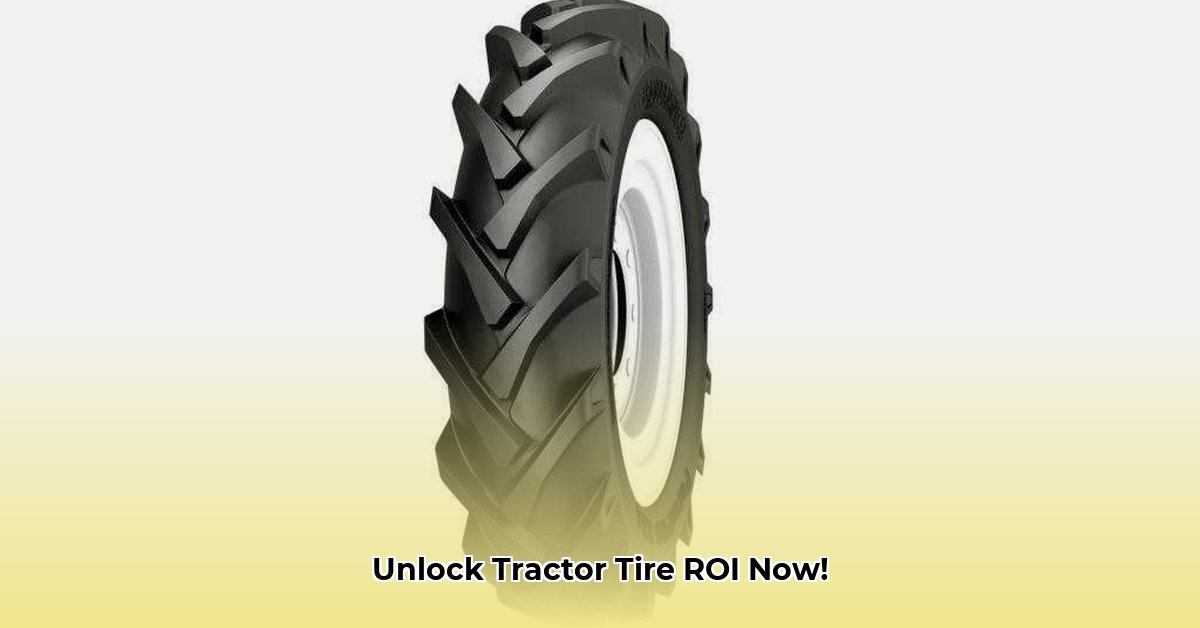
Choosing the right tires for your tractor is a critical decision impacting your farm's efficiency, sustainability, and profitability. This guide focuses on 12.4x24 tractor tires, providing a framework for making informed choices despite limited readily available comparative data. For information on tires for smaller tractors, see this helpful resource on 16-inch rim tires.
Understanding the 12.4x24 Tractor Tire Selection Challenge
Finding comprehensive data comparing 12.4x24 tractor tires is surprisingly difficult. Manufacturers often don't provide detailed, side-by-side comparisons of key performance indicators. This lack of transparency makes it challenging to objectively compare price, lifespan, fuel efficiency, traction, and soil compaction effects. How can you make the best decision without all the facts?
Key Factors Influencing Your Tire Choice
Several key factors influence your 12.4x24 tire selection, even with data limitations:
Initial Cost: The upfront price varies significantly between brands and models. Consider this cost in relation to the tire's expected lifespan and overall performance.
Lifespan: A longer-lasting tire reduces replacement costs and downtime. However, predicting lifespan accurately requires factoring in soil type, usage patterns, and weather conditions.
Fuel Efficiency: Rolling resistance significantly affects fuel consumption. Lower rolling resistance translates to fuel savings over the tire's lifetime. Unfortunately, direct comparisons of fuel efficiency among 12.4x24 tires are scarce.
Traction: Adequate traction is crucial for safe and efficient operation, particularly in challenging conditions. Quantifying traction objectively is challenging and often relies on subjective assessments.
Soil Compaction: Minimizing soil compaction is vital for maintaining healthy soil structure and maximizing crop yields. Different tire designs and inflation pressures have varying impacts on soil compaction.
A Practical Framework for Decision-Making
Given the lack of readily available comparative data, we suggest a structured approach to decision-making:
Step 1: Prioritize Measurable Factors: Focus on factors you can easily quantify, such as initial cost and manufacturer-estimated lifespan.
Step 2: Weigh Your Priorities: Assign weights to each factor based on their importance to your operation. For example, fuel efficiency might be more critical for some farms than others.
Step 3: Gather Information: Consult multiple sources: manufacturer specifications, online reviews (consider the source's credibility), and conversations with local mechanics and experienced farmers.
Step 4: Develop a Weighted Scoring System: Assign numerical scores (e.g., 1-5) to each tire option based on each weighted factor, and calculate a weighted score for each option. This helps prioritize the most important factors for your operation.
Step 5: Seek Expert Opinions: Talking to trusted mechanics, experienced farmers in your area, or your local agricultural extension office can provide valuable insights. Their practical experience can offset the lack of readily available data.
Step 6: Consider a Small-Scale Test (If Feasible): Testing a single tire of each type you’re considering in your field under your typical operating conditions is a practical, if resource intensive, method of collecting data. This approach gives you valuable firsthand experience.
Practical Recommendations and Next Steps
Thorough Research: Compare prices, warranties, and available data from different tire brands.
Farmer Networking: Talk to fellow farmers; their real-world experiences with various tire brands and models are invaluable.
Mechanic Consultation: Discuss tire performance and potential issues with your local agricultural mechanic. Their expertise can guide your selection.
Documentation and Data Collection: Maintain detailed records of your tire's performance—lifespan, fuel consumption, impact on soil compaction, and traction—this data forms the basis of future, informed decisions.
Advocate for Improved Data: The lack of comprehensive data is hampering everyone in the sector. Support initiatives promoting standardized testing protocols and more transparent data reporting from manufacturers.
Addressing Data Gaps: A Call for Industry Improvement
The scarcity of reliable, comparable data on 12.4x24 tractor tire performance highlights a critical gap in the industry. Increased transparency from manufacturers and the development of standardized testing protocols are essential to empower farmers with the information they need to make sound, sustainable choices. This collaborative effort will ultimately benefit both farmers and the environment.